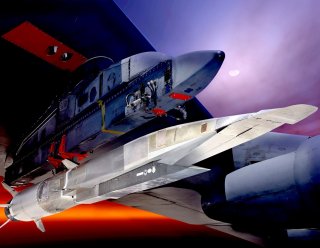The 15: 5 Best Bombers, 5 Best Submarines and 5 Worst Fighter Jets Ever
Good equipment can help determine victory or defeat.
The series was not a complete disaster; the F-100 was an adequate second generation fighter, the F-106 an entirely capable interceptor. The rest had the sort of troubles expected of a misaligned set of strategic and technological concepts. The McDonnell F-101 Voodoo was an interceptor converted into a fighter-bomber, a combination that made nearly no sense. It would mostly see service as a recon aircraft. The Convair F-102 Delta Dagger performed inadequately as both an interceptor and a fighter-bomber, briefly seeing combat in Vietnam before turning in its most notable service as a remote-control target drone.
The Lockheed F-104 Starfighter was fast, beautiful, and a death trap, earning the “flying coffin” nickname while suffering over thirty mishaps per 100000 flight hours (it was also known as the “Missile with a Man in It”). Over 50% of F-104s in Canadian service were lost in crashes, over 30% in German. The enormous Republic F-105 Thunderchief deserved better; designed as a nuclear bomber, it was ill-suited to the conventional bombing mission forced by the Vietnam War, and became easy prey to the Frescos, Fishbeds, and SA-2s.
The aircraft of the Century series had different builders, and were intended to perform different missions. However, they were procured in enormous quantities, and all suffered from problems associated with the same cause; the inability of the United States Air Force to conceptualize warfare outside of the strategic realm.
Mikoyan-Gurevich MiG-23:
The MiG-23 was supposed to be the Soviet answer to the big American fighters such as the F-4 and F-111, a powerful swing-wing fighter that could also perform attack and interception roles. And the Flogger surely was powerful.
But the Flogger was a beast to fly and to maintain. American “Red Eagle” pilots, tasked with determining the capabilities of Soviet aircraft, considered the Flogger a disaster waiting to happen. In 1984, Lieutenant General Robert M. Bond died flying a USAF operated Flogger. A relatively large aircraft, the Flogger also lacked many of the best qualities of its predecessors, including a small visual profile.
The MiG-23 was initially intended to fill out the air forces of the Warsaw Pact, but the Soviet clients generally preferred to keep their Fishbeds. Indeed, in export terms the MiG-23 was essentially a cheap loss-leader for the Soviet engine and technical support industries, as it proved remarkably difficult to safely keep in service. By design, engines burned out quickly, meaning that export customers who had fallen out of Soviet graces quickly lost the use of their fighters. The Flogger’s combat record, generally in Syrian, Iraqi, and Libyan service, has not been positive. It’s hardly surprising that the MiG-23 will almost certainly leave service before its predecessor, the MiG-21.
Conclusion:
In terms of future members of this list, attention naturally falls on the F-35 Joint Strike Fighter, which should exceed the 500 aircraft threshold. As I’ve argued before, it’s difficult to get a sense of the strategic value of the aircraft without a full perspective on its career. We won’t know whether the JSF is a deserving member of this list for quite some time. For one, it’s unlikely that the F-35 will suffer from anything approaching the accident rate of the fighters on this list. The JSF’s tremendous expense, however, undoubtedly makes it a long term candidate for inclusion.
Dishonorable Mention: General Dynamics F-111 Aardvark, McDonnell Douglas F-4 Phantom II, Messerschmidt Bf 110, Bolton-Paul Defiant, Fairey Fulmar, Sukhoi Su-7 Fitter.
This first appeared in 2016 and is being reposted due to reader interest.
Image: Reuters

